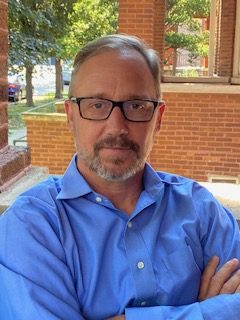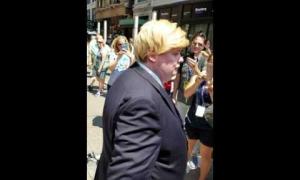Far from a Paradise
February 05, 2019
In an under-appreciated speech in 1906, Mary Church Terrell explained exactly why the nation's capital should not be known as "The Colored Man's Paradise."
February is Black History Month, so it is appropriate for VSOTD to take note of a speech that is regarded as one of the greatest speeches in African-American history—particularly since this speech was given by an African-American woman and particularly since it is a rhetorical gem that is not nearly as well known as it should be.
The speech is “What It Means to be Colored in the Capital of the U.S.”
It was delivered on October 10, 1906 to the United Women’s Club of Washington, D.C. The speaker was a most remarkable woman named Mary Church Terrell.
Mary Terrell was born on September 23, 1863 in Memphis, Tennessee, the child of former slaves. Her parents built a successful business after becoming free and, in time, her father would become the first black millionaire in the South. So while Mary grew up in an oppressive racist environment, she also grew up with a strong sense of what African Americans were capable of achieving if given the chance.
Mary was ambitious and hard-working. She attended Oberlin College and in 1884 became one of the first African-American women to earn a college degree. Four years later, she would earn a master’s degree in education. Over time, she would become a prominent advocate for the rights of African-Americans and of American women in general. In 1904, she was the only black woman invited to speak at the Berlin International Congress of Women. On that occasion, she gave her speech in English, French and German.
Mary’s speech in Washington two years later was not an international event, but would still have a major impact. In 1906, Washington was known as “The Colored Man’s Paradise.” Presumably, that was because African-Americans enjoyed opportunities in the nation’s capital that were not available to them elsewhere in the country.
After the Civil War, the District of Columbia was not legally segregated. Thousands of African-Americans took civil service exams and qualified for good jobs in federal offices, some of them in supervisory positions over white workers. Qualified black women could find work as nurses, dressmakers and occasionally as public school teachers. Some unions admitted skilled black workers. All this meant that D.C. had a thriving black middle class—hence the District’s reputation as “The Colored Man’s Paradise.”
But a few success stories did not mean that anything like real racial equality had been achieved. Mary Terrell made this abundantly clear from the opening words of her speech. It would be difficult, she began bluntly, to find a worse misnomer for Washington than “The Colored Man’s Paradise.”
“For fifteen years,” she said, “I have resided in Washington, and while it was far from being a paradise for colored people when I first touched these shores, it has been doing its level best ever since to make conditions for us intolerable.”
Warming to her theme, Mary went on to list one scourging example after another of the cruel disadvantages to which she and her fellow African-Americans were subjected because of their race. She might, she said, enter Washington as a stranger “and walk miles without finding a place to lay my head … Indians, Chinamen, Filipinos, Japanese and representatives of any other dark race can find hotel accommodations if they can pay for them. The colored man alone is thrust out of the hotels of the national capital like a leper.”
It was the same with restaurants, theaters, and other public buildings—even churches. With the exception of Catholic University, there was not a single white college in Washington that admitted persons of color.
Furthermore, “Not only can colored women secure no employment in the Washington stores, department and otherwise, except as menials, and such positions, of course, are few, but even as customers they are not infrequently treated with discourtesy both by the clerks and the proprietor himself.”
“And so,” she concluded: “I might go on citing instance after instance to show the variety of ways in which our people are sacrificed on the altar of prejudice in the Capital of the United States and how almost insurmountable are the obstacles which block his path to success.”
Sadly, discrimination in Washington would get worse instead of better in the years that followed. In 1913, Woodrow Wilson took office as president. While Wilson is today admired for his progressivism, he was a native of Virginia and an unreconstructed Confederate on anything to do with race. At his direction, the federal civil service was segregated and black civil servants were systematically purged from their positions.
Segregation in Washington would not end until the early 1950s. One of the first hammer blows to bring it crashing down was a 1953 Supreme Court decision that desegregated Washington restaurants. The case was District of Columbia v. John R. Thompson Co., Inc., and involved a cafeteria that had refused to serve three African-American patrons because of their race. Ironically, one of the three patrons was none other than Mary Church Terrell—still alive and still fighting the good fight at the age of 90.
Mary Terrell would live long enough to see the Supreme Court deliver its landmark opinion in Brown v. Board of Education, which would prove the death knell for segregation nationwide. Her home in Washington has been named a National Historic Landmark. But her real memorial is the brave, eloquent and stirring speech that she gave over a century ago and that still makes inspiring reading today.




